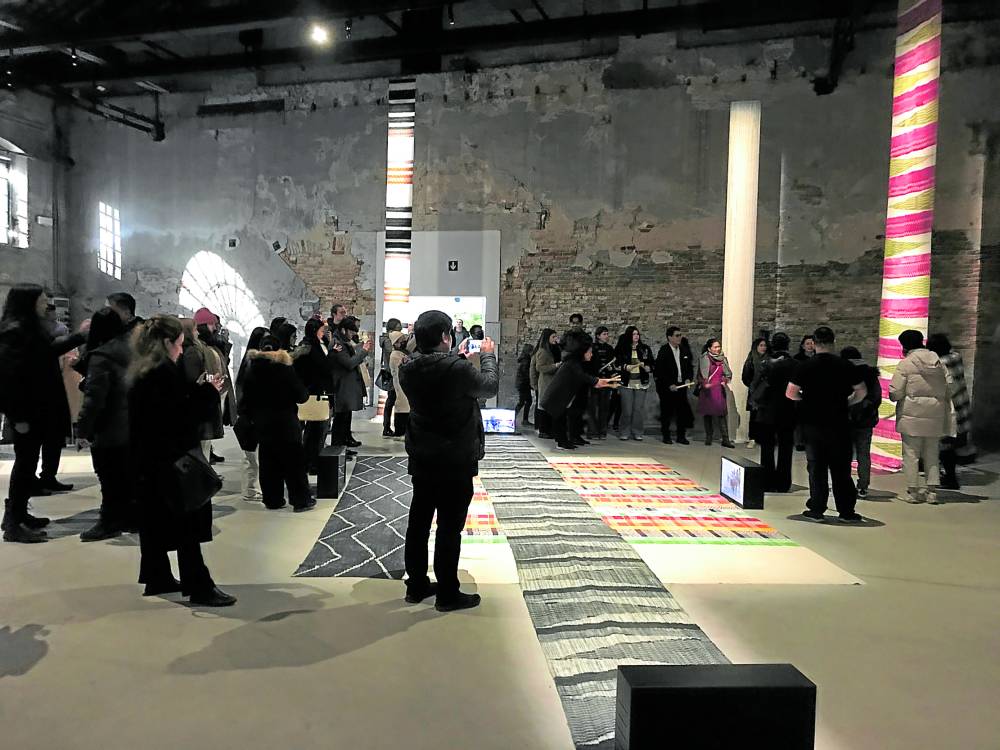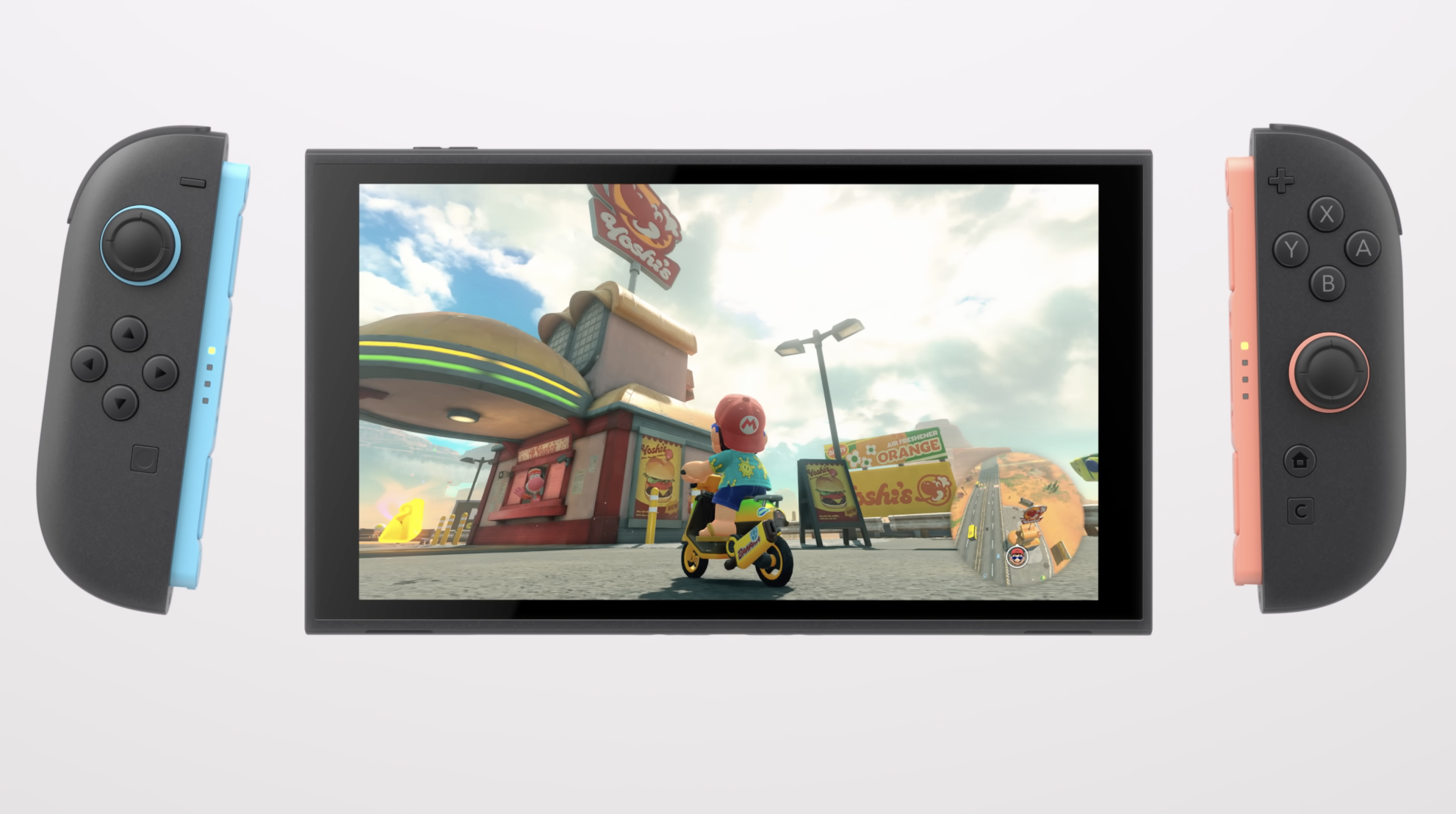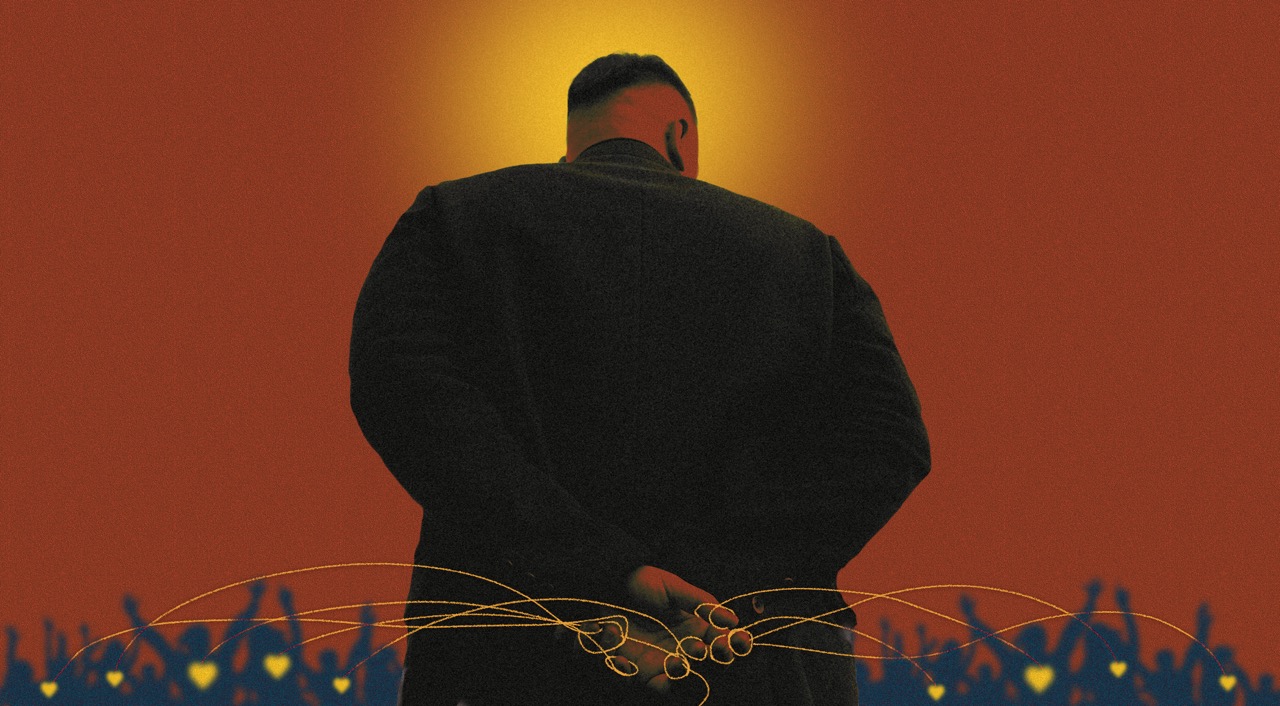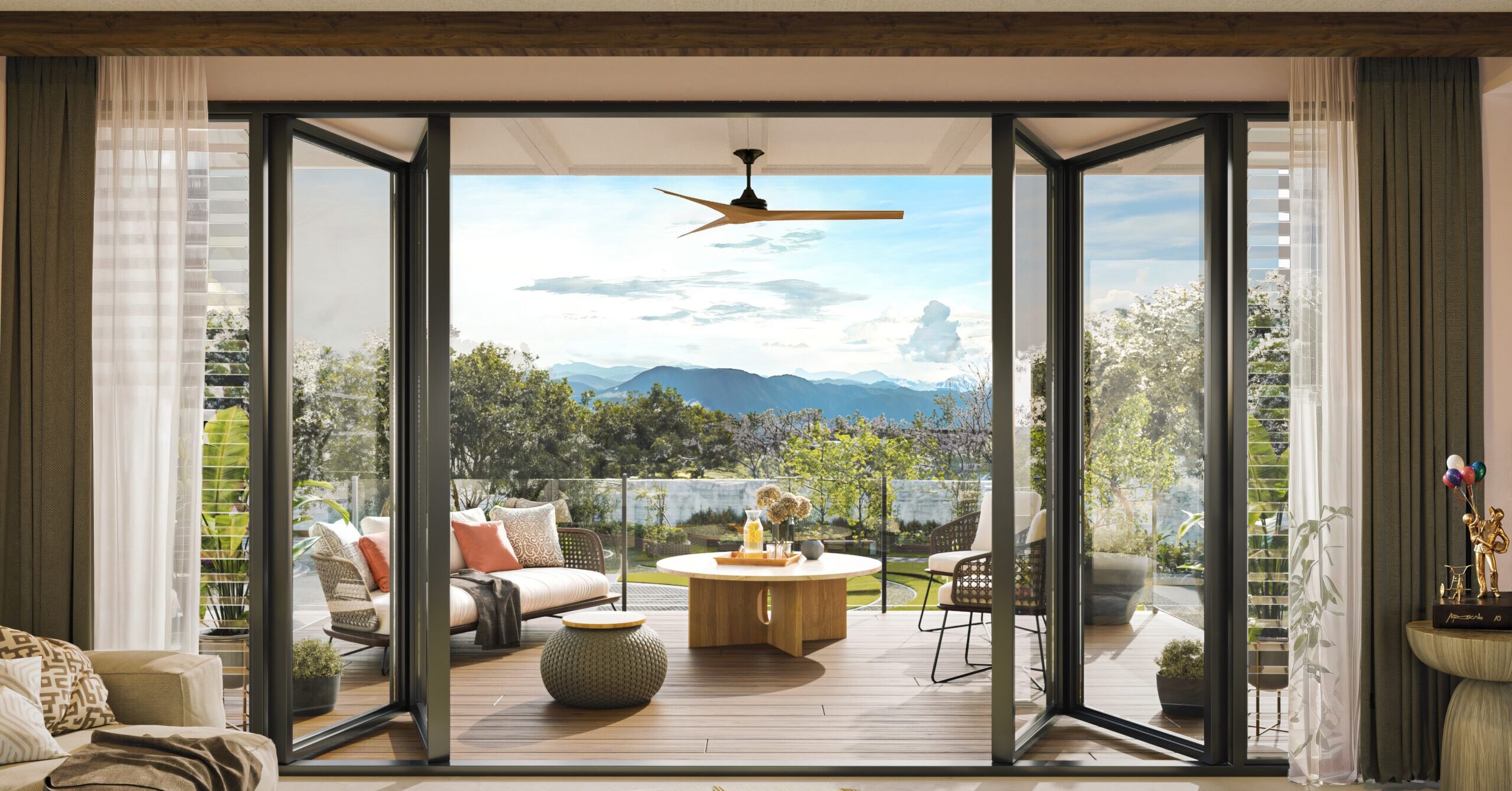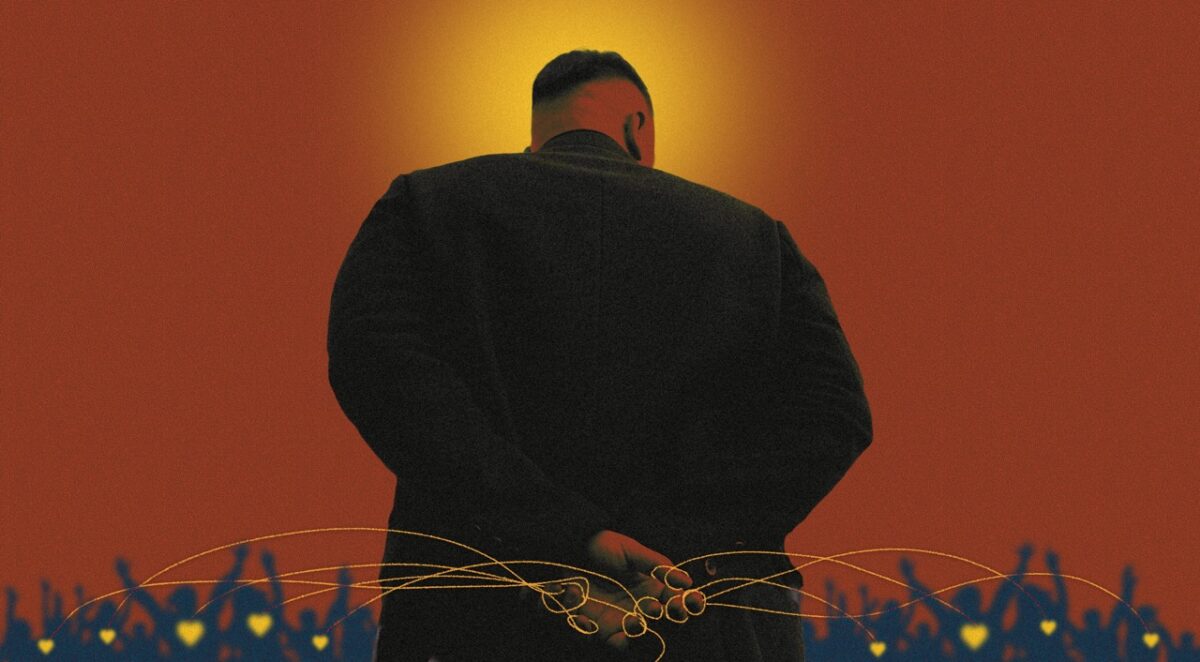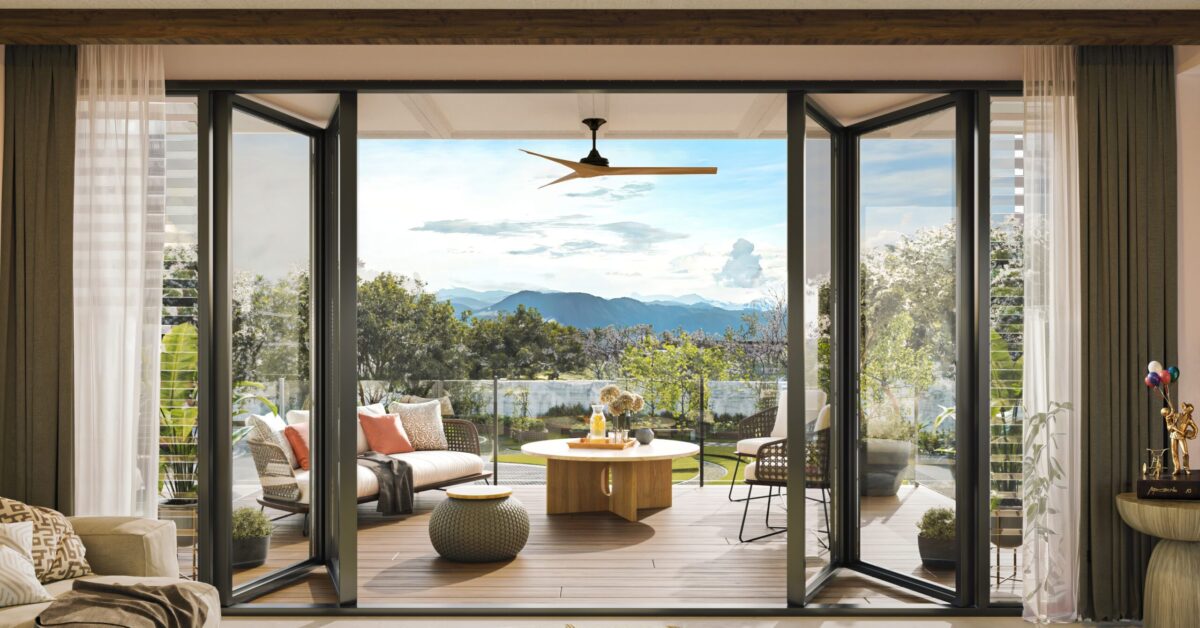VENICE—Every story begins with a single thread. The first thread in this story happens in 2016. Artist Gerardo “Gerry” Tan had accepted a friend’s invitation to visit the municipality of Miag-ao in Iloilo. Miag-ao is known for its pedal looms and their hablon (Hiligaynon for “to weave”). But as Tan approached one such weaving house and heard the loom in action, a thought struck him. “What if it was the sound they were weaving?” he asked Lifestyle. The rhythm reminded him of minimal music, and he pondered if it was possible to translate—and thus transform—the sound of the weaving into a visual medium.
Tan is an accomplished mixed media artist who has exhibited here and abroad, but what makes him different is his relentless need to add new elements to his work and his current obsession, sound. “I’ve always been curious about transforming sound into another form.”
Now we weave the second piece. Tan went searching for someone who could accomplish the vexing task of listening to the sounds of different looms all over the country and figure out a way of transcribing them into a score of some sort that Tan could then design and color into a pattern for a weaver to weave into textile. Through contacts at the University of the Philippines (UP) College of Music in Diliman, he found just the right person. Ethnomusicologist
Dr. Felicidad “Fe” Prudente had worked with National Artist for Music Jose Maceda and can pretty much do any kind of musical transcription, but this one was new to her, perhaps the top ethnomusicologist in the country specializing in indigenous Philippine music. In person she seems like the music teacher you always wished you had. “You needed to do fieldwork. So we went to different weaving houses that were willing to be on video.” Off and on, she listened to the sounds and crafted her own transcriptions in black and white, notating it on graphing paper. “Then I passed it on to Gerry.”
This is where weaving the story took a very long time. Prudente and Tan traveled from Iloilo to Antique, from Abra to Maguindanao, from Kalinga to Davao del Sur up to 2020, to finish collecting all the sounds they needed, from the pedal to the backstrap looms. Tan would then design a weaving guide for their weaver to use to create the actual textile in color, yet another translation. Looking at Tan’s work, one can’t help but be mesmerized by the lines—some straight, some not—and the color. If a design had two different patterns running parallel horizontally, it meant those two sounds were recorded simultaneously.

“I liked what Gerry was doing because it was so refined,” Prudente said. “If you see the work that I was doing, it was so rough. When it gets to him, it becomes art.”
Visualizing sound
But they found yet another thread to weave into their story.
They needed a weaver who could look at Tan’s rendered sound transcriptions and actually weave them into textile. And again, they found him in 2017, and he was nothing like they expected.
Sammy Buhle had grown up in Ifugao, the latest in a line of weavers in his family. At the age of 7, he learned how to use the loom, but he soon stopped as he had to go to school. However, upon graduating, he returned home to Ifugao.
“There weren’t any good jobs out there for me,” he confessed in Filipino.
Instead, he took up weaving again almost without realizing it since 2011, and found commercial customers. Youthful and quiet, Buhle looks nothing like his 33 years of age, but he can weave like nobody’s business.

Antique-Ifugao textile
Through a contact at the UP Baguio, Tan and Prudente found Buhle. Buhle took one look at the patterns and immediately pointed out which could be done and which were just not doable. “Not everything in the paintings could be woven, but I think we came close to everything we intended,” he said. Then Buhle began weaving.
That was one part of the project. The other part of the project Tan had conceived was something called “Speaking in Tongue.” He asked Prudente, who was going to the Cordillera, to document on video just the mouth of a Madukayan performer named Jose Pangsiw chanting the sogna, an extemporaneous chant in their dialect. Initially, Prudente found it weird but acquiesced. The chant went: “Andi taku e sana, Amung taku si sana,” meaning “All of us are present, this is our gathering.”
Squid ink
Prudente returned with the precious video. Tan watched it without the audio. He memorized and recreated every movement of the Madukayan performer’s tongue. He set up a video camera with a glass sheet in front of it and began recording. He coated the tip of his tongue with squid ink, pressed it on the glass and repeated the entire chant, the words of the sogna now becoming visual patterns on video.
Why squid ink? “When a squid senses danger, it releases black ink,” Tan explained. “Part of it is hidden but part of it is also revealed. That is what translation is like.”
These two videos situated apart from each other (and on the ceiling, at that) would constitute one part of the exhibit, called “Speaking in Tongue.” This is because, according to Tan, “it is related to the weaving.”
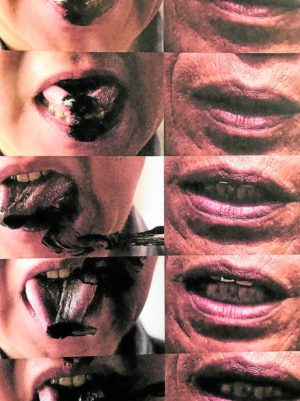
Meanwhile, Buhle had finished the four musical mats for the exhibit. They had accomplished something rather mind-boggling. In 2016, Tan had arrived and heard weaving, but that weaving essentially was through Prudente’s transcriptions and Tan’s patterns, turned visual, and now, through, Buhle’s hard work, become weaving again—but completely different from the original item being woven.
Not only that, but the true genius of the project was now revealed: Prudente demonstrated how you could easily use the woven scores to play sounds that represented the places the original sounds came from. Yet another transformation, with each piece of textile reflecting the unique sound of the place, the sound the weaving came from.
Since all the textiles for the exhibit were ultimately made by Buhle, each one would also reflect his place of origin in its name, thus the Maguindanao pattern would be titled “Maguindanao-Ifugao.” Now, it was time for the exhibit.
“Visualizing Sound” ran from February to March 2019 at the Jorge B. Vargas Museum and Filipiniana Research Center at UP. But an entire other story was being woven at the same time—across the world and across over a century.
All of us are present
Established in 1895, La Biennale di Venezia or the Venice Biennale is the oldest, largest and most prestigious contemporary artistic institution in the world, attracting exhibitors from over 75 countries. The Philippines joined the august company in 1964, featuring the works of future National Artists for Visual Arts Jose Joya and Napoleon Abueva. But the Philippines’ participation was discontinued because, “it was just too expensive,” explained Aurea Lopez, head of the Philippine Arts in Venice Biennale Coordinating Committee (PAVB-CC).
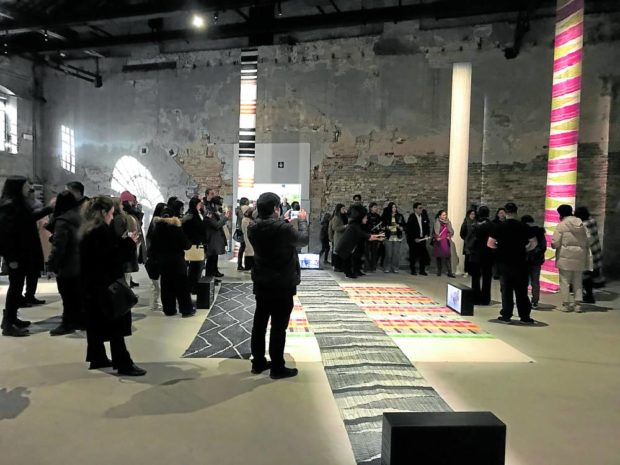
Lopez recalls this all changed when then Sen. Loren Legarda visited the Biennale and wondered why the Philippines was not there. So she found a way, and starting in 2015, the Philippines has been continually occupying a pavilion as National Participant (as compared to those part of the thematic main exhibitions).
With the support of Legarda, now Deputy Speaker and congresswoman, the National Commission for Culture and the Arts and the Department of Foreign Affairs, there would be a Philippine Pavilion at the 59th International Art Exhibition of the Venice Biennale. An open curatorial call went out on Jan. 30, 2021.
Tan was in the process of continuing “Visualizing Sound” when it was suggested that they submit it as a possible proposal for the Philippine Pavilion at the 2022 Biennale. Before you could submit a proposal, you needed a curator. Another set of threads was woven into place when Tan linked up with Artery Art Space codirector Arvin Flores and arts management administrator Yael Buencamino, who had just finished curating a show for Silverlens.
Buencamino had actually seen the “Visualizing Sound” show at UP when Tan reached her in Batangas in December 2020. She agreed to co-curate the proposal: “You needed to be comfortable with the people you’re working with. I accepted because I really like Gerry’s work and even when I saw the show at Vargas, I thought this was Biennale material. It was conceptual, but it also engages from different aspects of Philippine culture.”
But they would have to upsize the Vargas version of the show a bit. “Luckily, Gerry was already planning on doing this as an ongoing project so when Sammy found out they needed eight more pieces, he was ready,” Buencamino said.
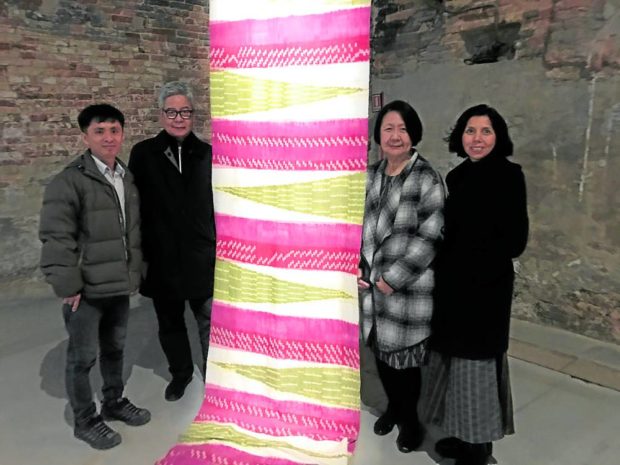
The Vargas show thus became the study for the full-sized exhibit they planned for the Biennale, titled, appropriately enough, “Andi taku e sana, Amung taku si sana /All of us are present, This is our gathering.”
They sent in the proposal in May. Of the 11 proposals, it was chosen by the jury on June 18, 2021. Now came the preparation.
Collaborative
The curators discussed their ideas with the artists. Flores put together most of the proposal. Buencamino handled the logistics. Then they designed, chose personnel and trouble-shot for the exhibit and the catalog.
“It’s a very collaborative process,” Buencamino said. “Gerry thinks through his practice very well and he just needs to bounce his ideas off others. Arvin and my job is to show other layers of his ideas. You help him articulate it.”
The exhibition “explores the diverse aspects of representation operating on the metaphoricity of weaving, the interlacing of things that produce patterns of categorical signification,” Flores writes in the catalog. “In the mixing and connecting of mutable multiplicities involving geography, culture, materials and techniques, to name but a few, the idea of the assemblage becomes the ideal form for this experimental process.”

Buencamino got literal boots on the ground in March and got to work right away with the team. Now it was time to realize the fully formed exhibit. When you walk in, it’s immediately different from the UP show. The two screens, now bigger and side by side, of “Speaking in Tongue” is now the first thing you see when you enter the Pavilion, and this is important because, Tan said, “That’s the work.” This is followed by an introduction to the exhibition.
Meanwhile, Buhle had to finish the textiles, and he did in the nick of time to fly the textiles out. But he could not fly out with them. It turned out he had never owned a passport, or a government ID with his face on it, preventing him from getting a passport. By going to Manila, Buhle was finally able to get a postal ID card, which allowed him to get a passport, and he arrived at Venice’s Marco Polo Airport in May.
They strategically placed the textiles on the ground, hung them on the walls and columns, set up the video monitors. For the perfect soundscape for the walk-around experience, Tan thought of recording the voices of a choir, and have sound engineers Corinne de San Jose and James Clarr perfect them.
When it turned out the venue’s huge glass windows had been stripped of their tint and the bright sunlight washed out the exhibit, the PAVB-CC worked with Biennale officials to address the situation in time with an extra layer of tint and the correctly placed better interior lighting for the Biennale’s vernissage or opening on April 19, with the public opening on the 23rd. Aside from the “Speaking in Tongue” installation, there would be 13 pieces in all: 12 textiles by Buhle, as well as an archival display of Prudente’s original transcriptions for Tan and Tan’s color renderings for Buhle.
This is our gathering
“Andi taku e sana, Amung taku si sana /All of us are present, This is our gathering” ran at the Biennale from April to the finissage or closing on Nov. 27. During this stretch, visitors of all nationalities witnessed the ingenuity of the experiment and the beauty of the exhibit. Buhle said he was often asked about the process of looming and the textiles themselves. “Finally, our project was finished and it was exhibited here,” he said.
During the finissage, Prudente demonstrated exactly how the musical textiles worked with volunteer visitors. Nothing makes you understand the magic of the Philippine Pavilion better than participating in it.
“You take sound for granted. But for me, sound is the energy of the weaver as she makes the cloth,” Prudente said. It’s very fulfilling. It’s really a once-in-a-lifetime experience. You have to savor everything. Art is all around you.”
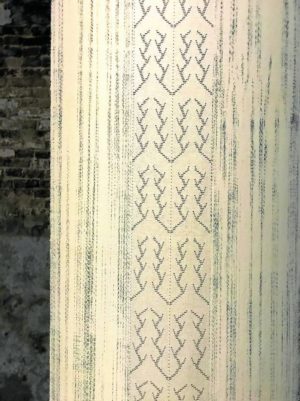
She added, “The important thing there is the awareness. Most of the time when you think of contemporary art in the Philippines, it’s always painting or sculpture, but this is one of those times when we promote that there is something going on in contemporary textile art.”
Buhle agreed. “We should promote our art in the form of weaving to the world, and I’m happy that I got to use my art to do that.”
For Buencamino, the best part of the 59th Biennale was being able to work with artists of such talent—and the impact of the exhibit: “Both to the Filipinos and to the world, the interaction of conceptual and traditional art. It’s also a testament to the diversity of Philippine culture. It’s a lot of regions represented here. Internationally, it interacts with people on a very visceral level. They react to the parts they can relate to.”
Instead of contemporary art, next year the Venice Biennale will feature the 18th International Architecture Exhibition, with the Philippines represented by curators Sam Domingo and Choie Y. Funk.
One more fascinating and heartwarming aspect of the Biennale was how Filipinos—first- and second-generation—came to support the exhibit and each other. A group of teachers even came all the way from Northern Spain to see the exhibit.
The PAVB-CC gave the Philippine Pavilion legs. Even as the exhibit ended, the “Visualizing Sound” lecture workshop tour started, as the artists and part of the exhibit was brought to Milan, Padova, Mestre, Conegliano, Florence, Bologna and Rome. At each stop, the artists were welcomed like heroes and the Filipino community welcomed each other like long-lost relatives.
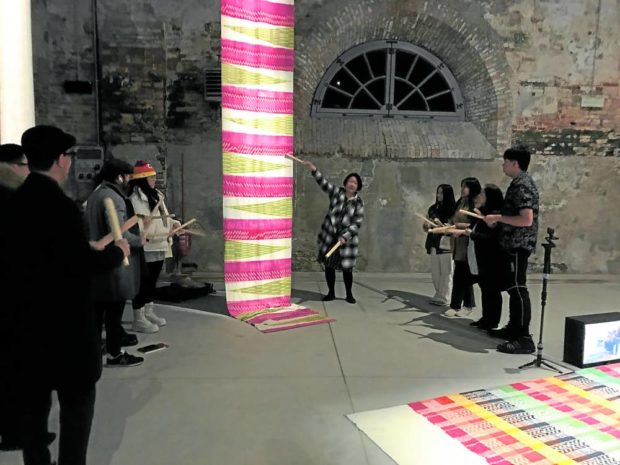
Asked what he loved most about the entire experience, Tan named two. First, he said, “I’m glad to have the opportunity to be in dialogue with other artists from around the world. I like seeing the work in the context of an international art show, the work within the context of the contemporary art world.”
Then, he said, “I liked how the event generated other things, like Filipinos gathering, showing it to them, seeing it communicate with them, and I realize this is a new aspect of the exhibit, as I am now in dialogue with them.”
Tan is ready for what comes next: Going home—and going further. “The plan is to show it in Manila first, maybe at The Met Museum (The M in BGC), and then I’d like to take it to Iloilo where the idea originally came from. At each stop, my plan is to add to the work, make it different in context or time.”
He already knows what he’s going to do for the Manila show: He’s going to do a video work of the waves of Venice and those of Manila Bay. Connecting it to the exhibit, he explained, “It’s like a sound map, but instead of weaving, it’s painting/video.” He admitted he already has the Venice part of the project done.
And the weaving continues.
Watch the virtual tour of the Philippine Pavilion at the Venice Biennale at https://www.youtube.com/watch?v=m1T33Tqidfc.

